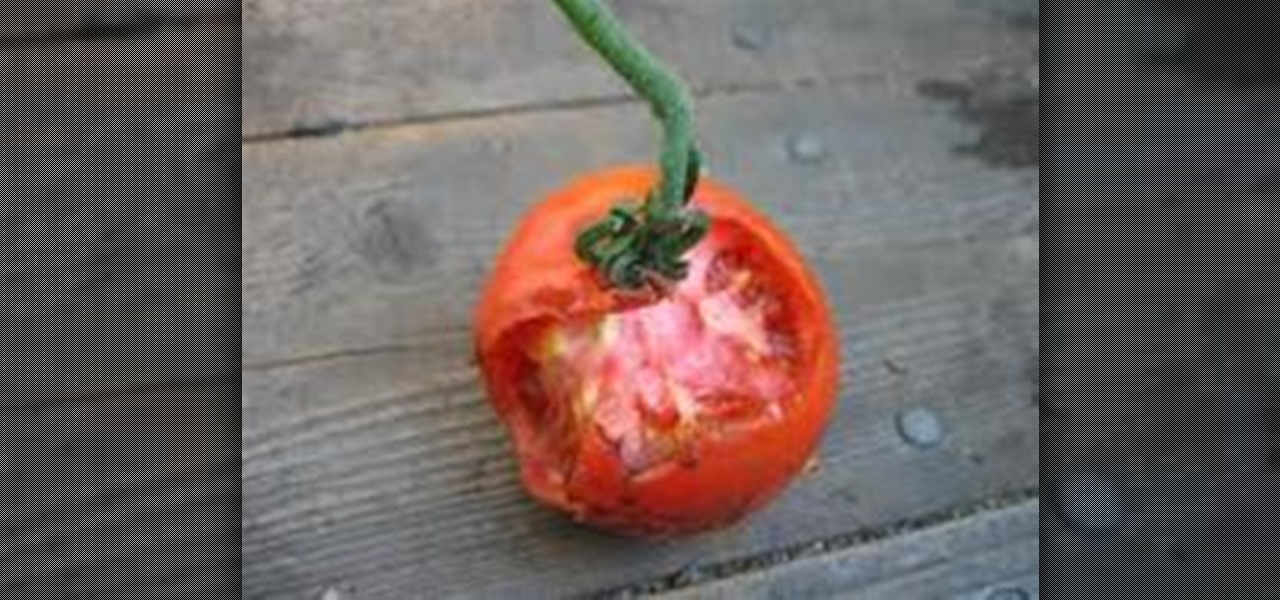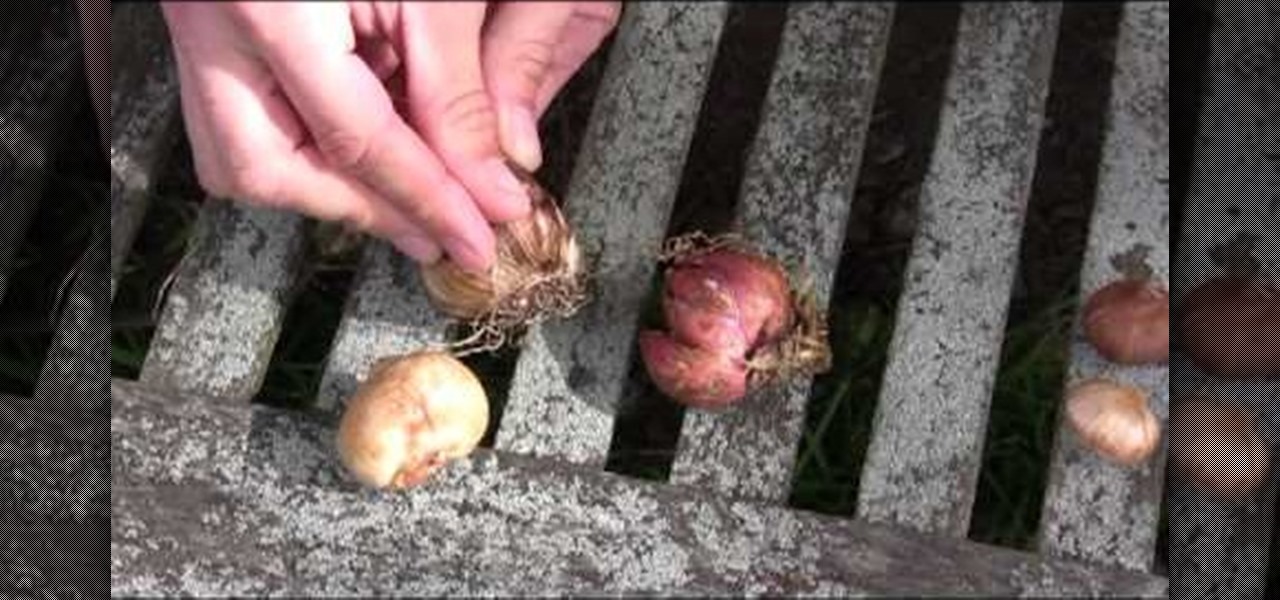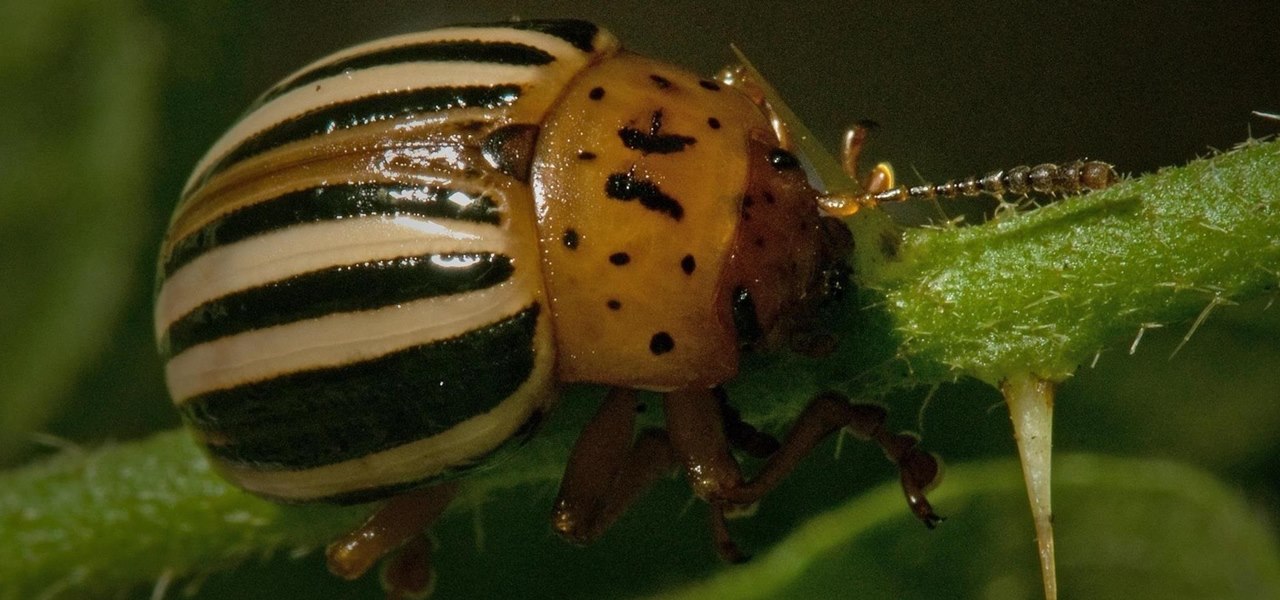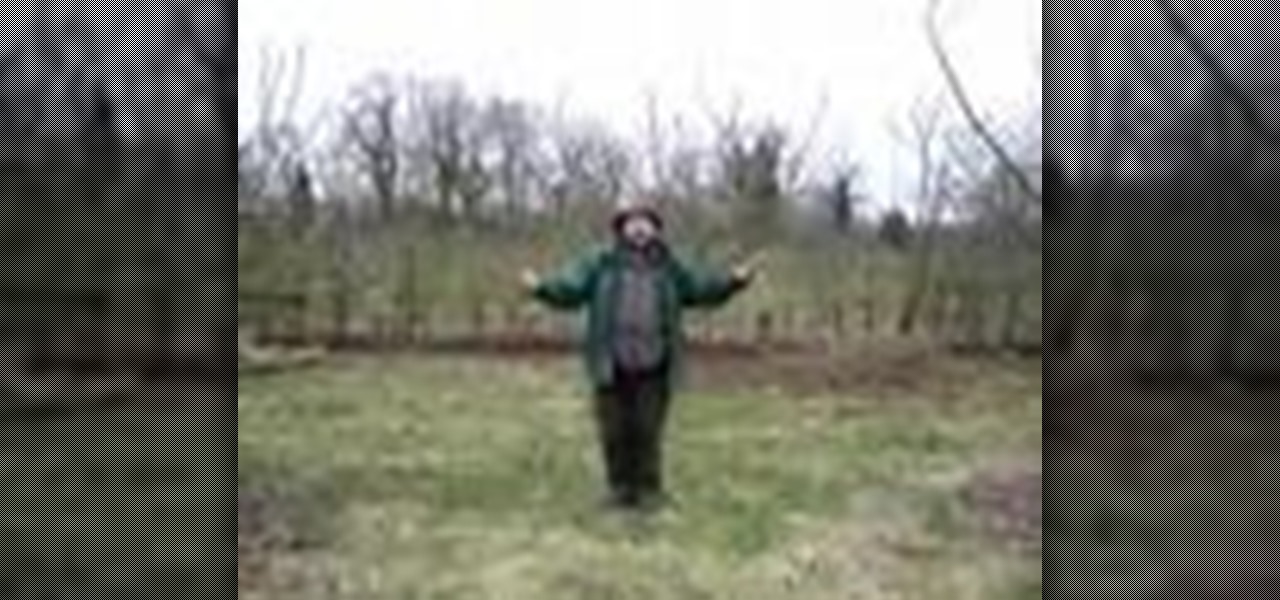Hot Gardening Posts

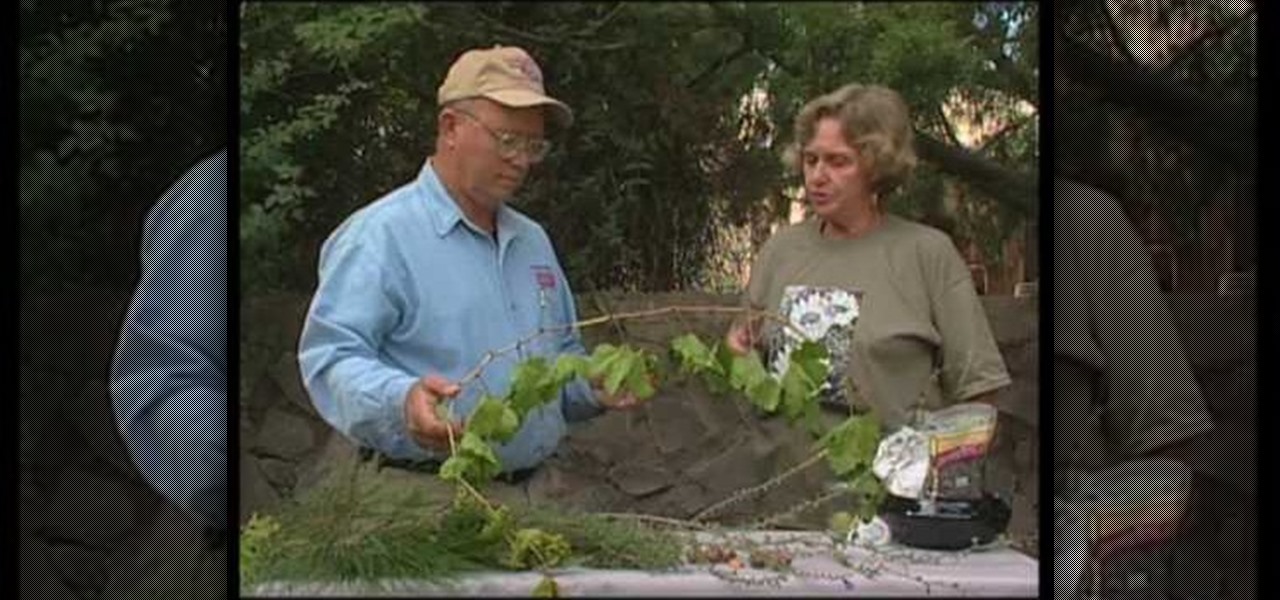
How To: Identify problems with pecans & pruning grapevines
Master Gardener Rosamarie Maddox asks John White, Doña Ana County Extension Agent, about problems facing her pecans, grapevines, and native shrubs. An unidentified insect found on her pecan tree is identified by John White as a Twice Stabbed Ladybug. This ladybug is a useful insect that often over-winters on the tree and helps takes care of the aphid problems faced by pecans. Pink fuzzy coating on pecan nuts is also brought up. The coating is normal for pecan and contains bitter tannin. Too m...
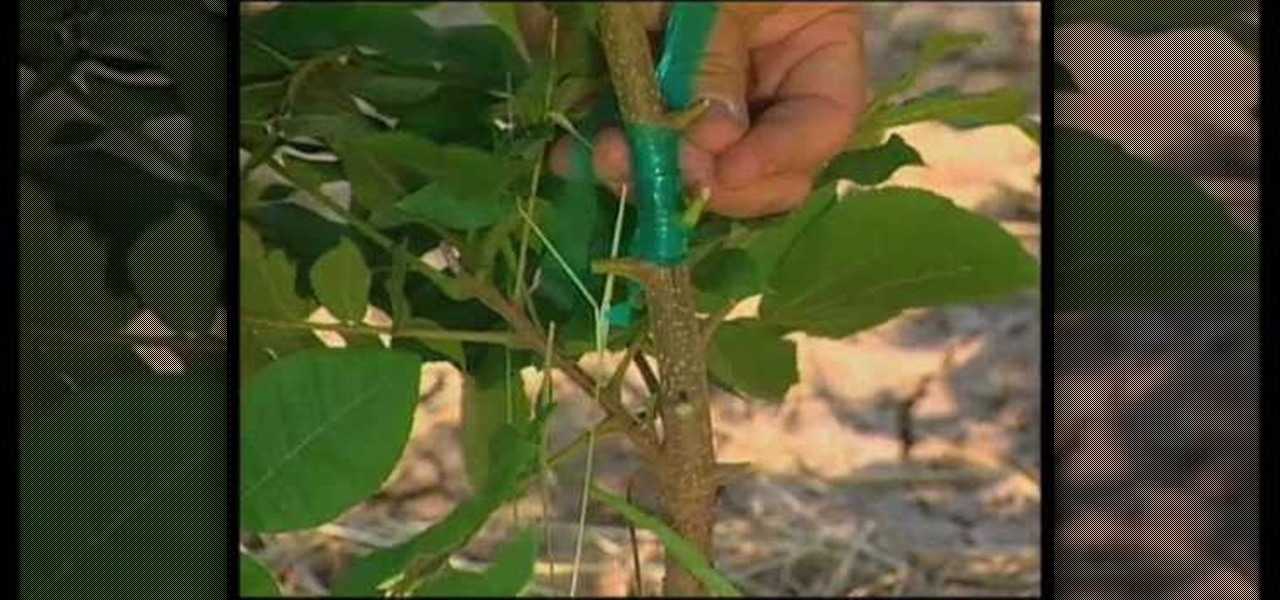
How To: Patch budding pecans
This will illustrate us how to Patch budding pecans . Here are the following steps.Step 1: First of all we have to see whether the right season is there or not that is spring or late summer.Step 2 :Selecta smooth, convenient location on the stock. Make a double cut approximately 11/2 inches long, by rotating a double bladed budding knifeStep 3: Connect the double cut on the right side with one perpendicular cut. This can be done with one of the budding knife blades.Step 4: Raise the bark on ...

How To: Care for house plants growing in water
Growing plants in the Southwest is different then other climates. We learn how to grow plants in water. Salt is a factor that we need to be cautious of. Salt is in soil and in water. Water, once absorbed leaves a layer of salt. It can be avoided by watering in a certain way. Changing the water frequently, a dish underneath a potted plant to drain the water and flushing out the salt and re-potting periodically. Sometimes extremes measures must be taken to hydrate a plant. In this case putting ...

How To: Treat for lawn grubs
This video gives you tips on how to treat Lawn Grubs. The infestation of grubs is fairly easy to detect. The grass will die off in patches. The grubs will be visible. There are about 8 different species of white grubs that can infest your lawn.
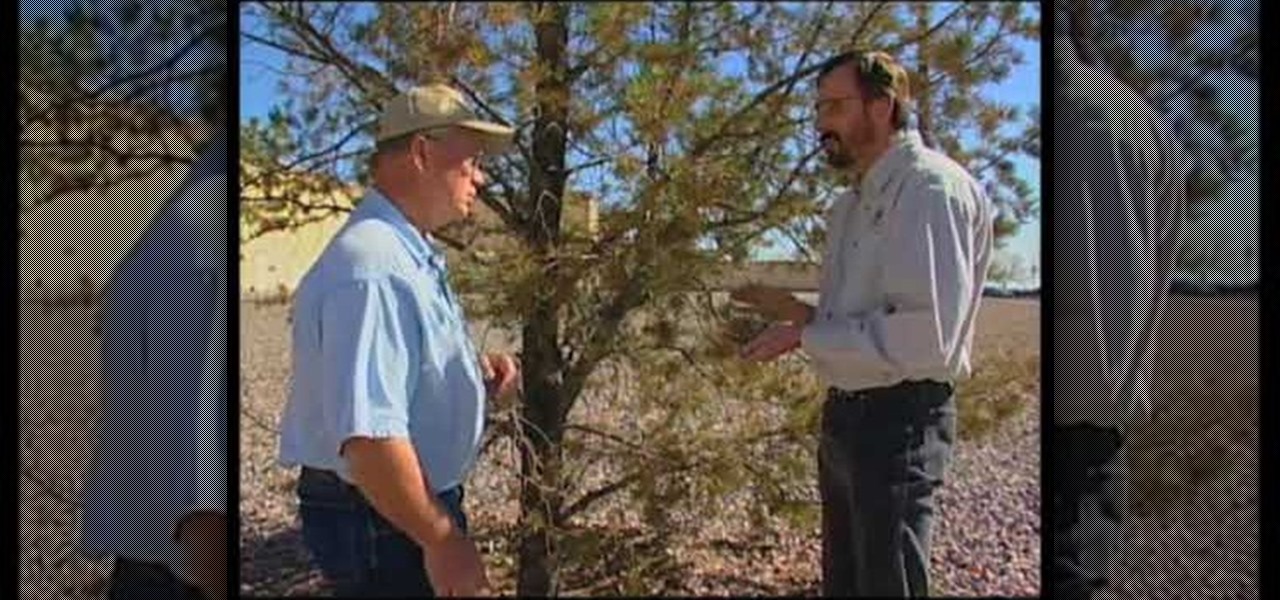
How To: Identify pinon needle scale
Identify pinion needle scaleWe are going to look at this insect because eggs are being laid. Two year old needles are being cast off. This is a sign of infestation. There is also sparse, open foliage. This tends to be a chronic infestation. The insect is the pinion needle scale. You can see tiny, bean shaped bumps on the 2 year old needles. The insects move to last years new growth and feast on the sap of the needle all summer. You can see egg masses and web on the trunk of the tree. The inse...
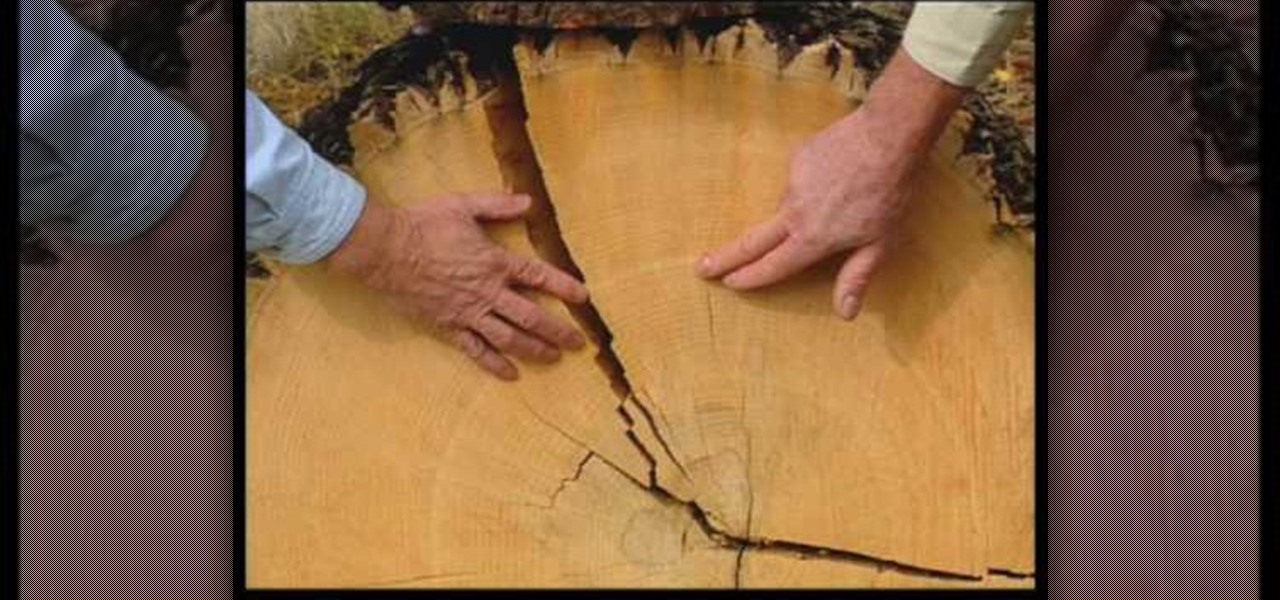
How To: Read tree growth rings
This video explains how tree growth rings function and what they can tell us.The growth rings are formed in 2 (sometimes 3) layers of wood that are the spring growth and the summer growth. Ring width can vary depending on the specie of the tree, the environment in which it has grown and the amount of water it has used. By counting the rings you can tell the age of the tree.By analyzing the growth rings, you can see the years in which there was a drought where the tree once stood, because the ...

How To: Style a cork bark oak for the first time
Graham Potter shows how to stylize cork bark oak. The main way to stylize is to avoid the carving of the bark, but to carving the branches. Its recommended to start carving when the branches are young. First you will start removing all the branches you have no use for (e.g.. shortening branches to about 4 to 5 leaves). Graham says while trimming the branches, do not worry about the immediate image of the branches, but of the image of what it will look like in the future when it fully grows. G...
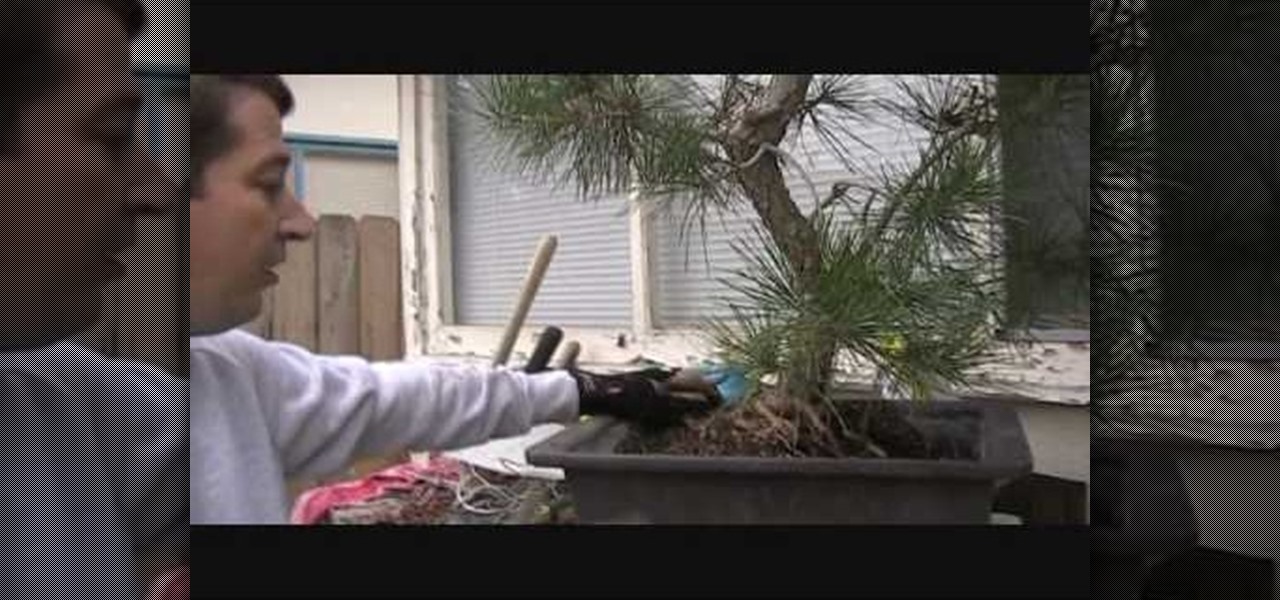
How To: Lift and repot a black pine bonsai
Charles M., an attorney and bonsai cultivator, demonstrates how to transfer a field grown Japanese Black Pine that is ready for training. A 5-gallong nursery specimen was purchased and planted in the ground with a bonsai compound soil to keep its roots close and compact during trunk thickening. The tree was allowed to grow for three years, with the main foliage under four feet, but with two “sacrifice” branches allowed to shoot out without trimming. One sacrifice branch at the top of the tree...
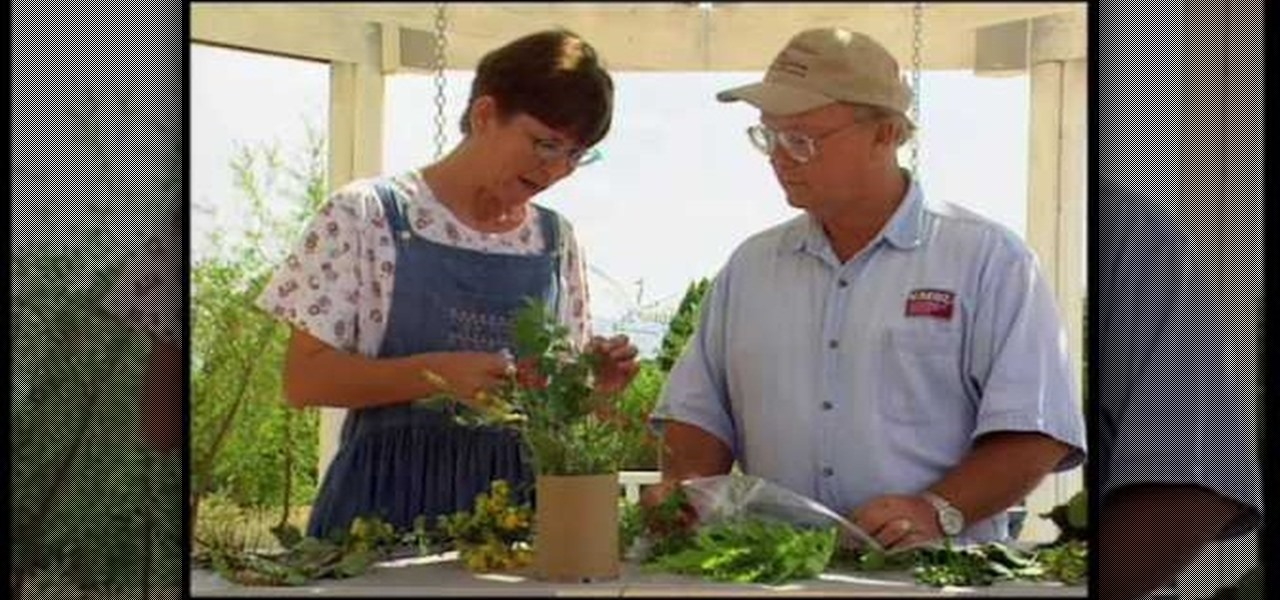
How To: Identify a spittle bug on your salvia
Great video by Southwest Yard & Garden. tutorial on how to identify garden pests on your plants & shrubs. Went into detail on the Salvia plants - always be careful spittle bugs, they produce spittle commonly on Salvia plants. Whiteflies and aphids are known to take residence in Ash trees. Aphids commonly take on the look of mildew. Ways to manage moths for apples, you can use insecticide spray but be conservative. Took a look at signs of Cochineal Scale on a Prickly Pear. Went over ways to ta...
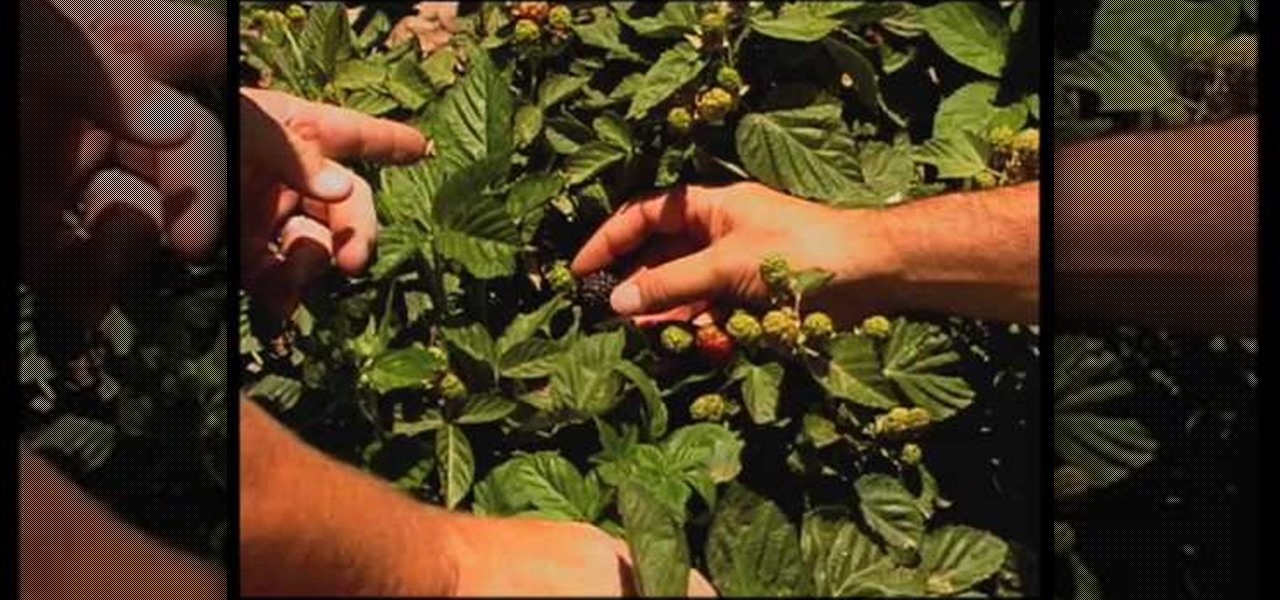
How To: Grow blackberries in southern New Mexico
Southwest Yard and Garden teaches viewers hot to grow blackberries in Southern New Mexico. Blackberries grow in high rain fall areas but they can work in the south west. They will need bee pollination so you need to make sure that you do not spray too much insecticide on them or you will kill of the bees. Make sure you pick the blueberries when they are dull and not when they are shiny. This will give them the maximum sugar content. Blackberries should grow in sandy soil or looser soil. You m...
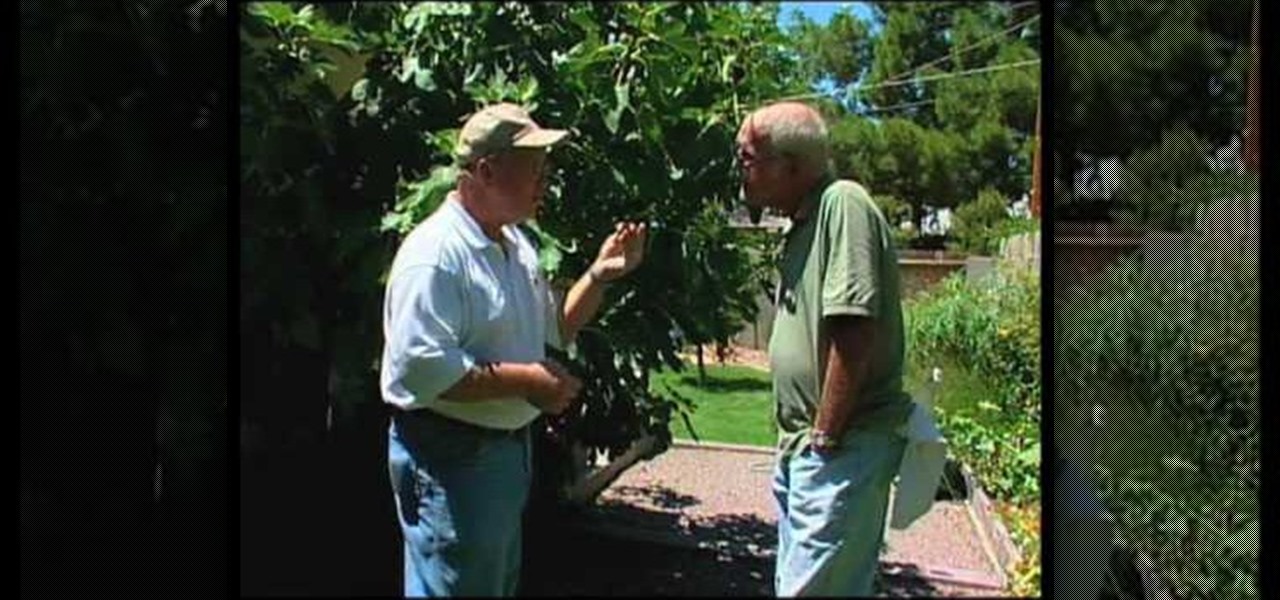
How To: Grow a fig tree in southern New Mexico
In this segment of Southwest Yard and Garden, John White and Bill Alford are going to be talking about fruit production and how to harvest figs in southern New Mexico. Bill starts off by talking about his nine year old Black Turkey tree. He says he digs holes and arbor each spring, then uses half a cup of fertilizer per hole. The roots of a fig tree usually grow out past the outer parts of the tree so it's important to make sure you plant has adequate room to grow correctly. A person can mayb...
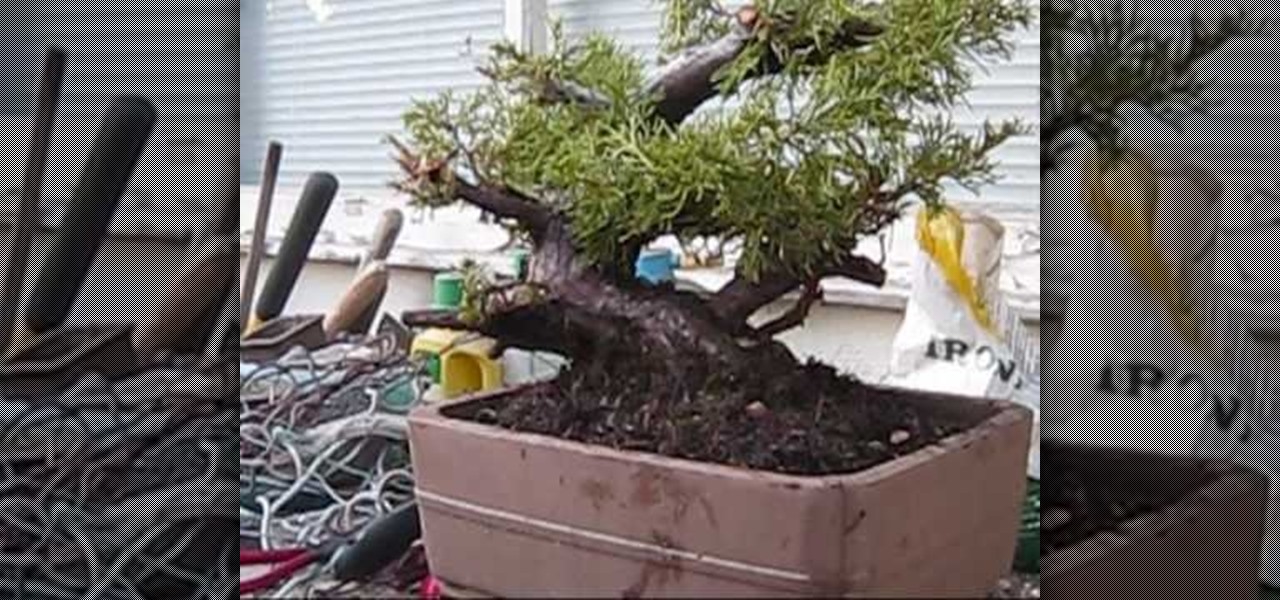
How To: Repot a juniper bonsai tree fall
When re-potting a juniper bonsai tree you're going to have to go through the following procedures. First get it out of the existing pot and then rake out the soil at it's base. After doing so for a while, blast the soil with a water jet. If by chance you encounter stubs of ground level branches, try to remove it with a cutter, otherwise use a pruning saw. Now go back to cleaning and reducing the root mass, having done so as much as possible move the tree into another container. Start backfill...
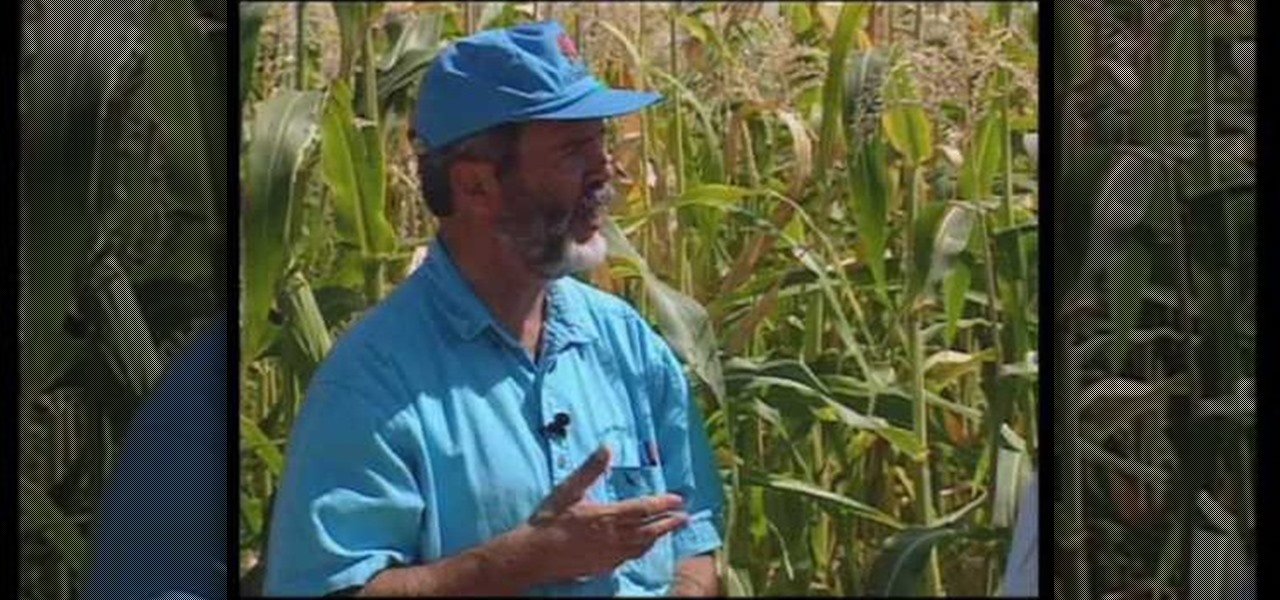
How To: Grow blue corn
Blue corn is a special variety of corn which can be differentiated by the majority of the corn species by looking at the unusual top growth of the corn. It is a hybrid and grows very uniformly throughout. Now take a corn from the field and peel it off. You shall notice that it has a blue color corns. Blue color corns are hard from outside but they are very soft and tender in the middle. You can use these blue corns in making commercial products like blue corn chips, tortillas, and atole ’,‘ c...
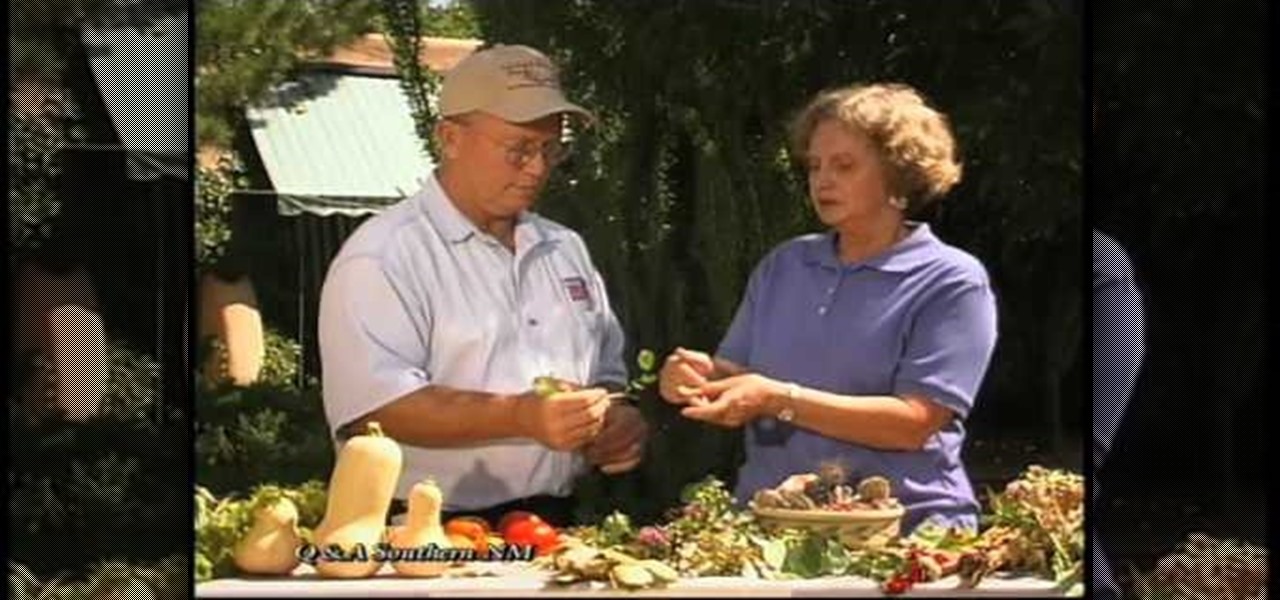
How To: Identify problems with heat scorch on roses
John White and Rosemary Maddox address garden problems concerning heat and sun damage on their plants. Rosemary grows tomatoes that grow healthily, but are dry and cracked at the top. John identifies the problem as an excessive exposure to heat and sunlight, and recommends putting a netting over the plants to filter and moderate the sunlight. Rosemary also has a similar problem with her roses. The leaves on her rose plants become yellow and brown and eventually die off. John calls it "heat sc...
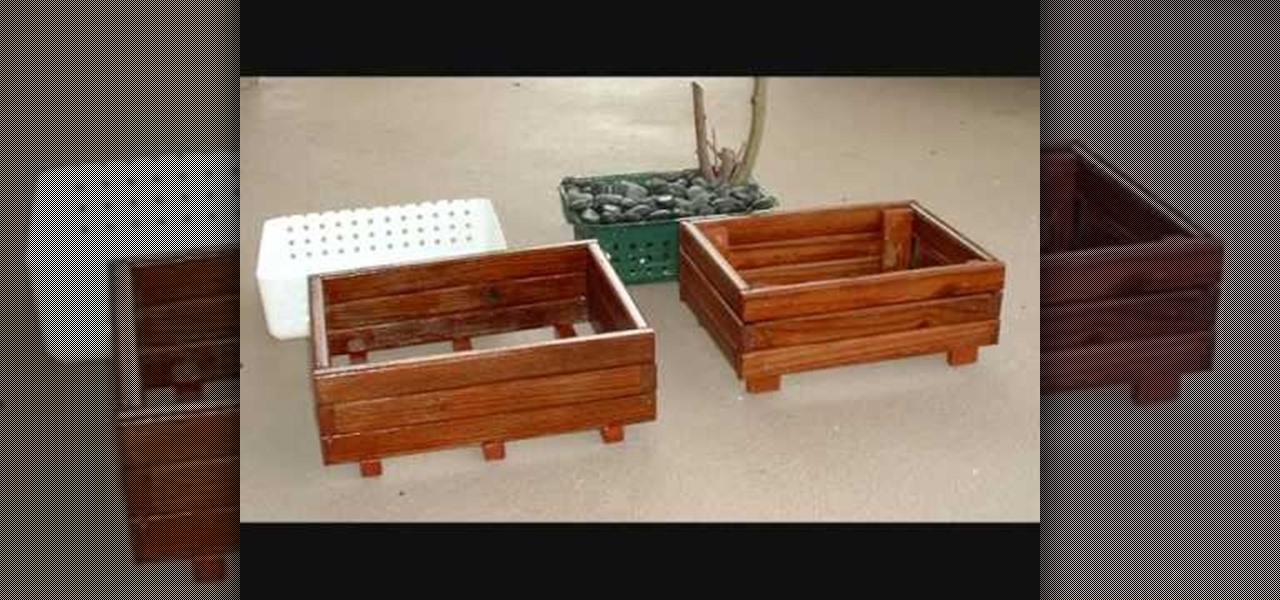
How To: Make a simple wooden bonsai pot
In this how-to video, you will learn how to make a wooden bonsai pot. You will need pressure treated wood made of all weather oak. You will also need a strain brush and nails. Assorted plastic bins will also be needed. Drill holes into the bottom of the plastic bin. Next, cut it to size. Cut the pieces of wood to the correct size and then line and tape them up. Next, nail the wooden pieces together. Now, place two pieces of wood on the bottom for legs. This allows air to flow beneath the pot....
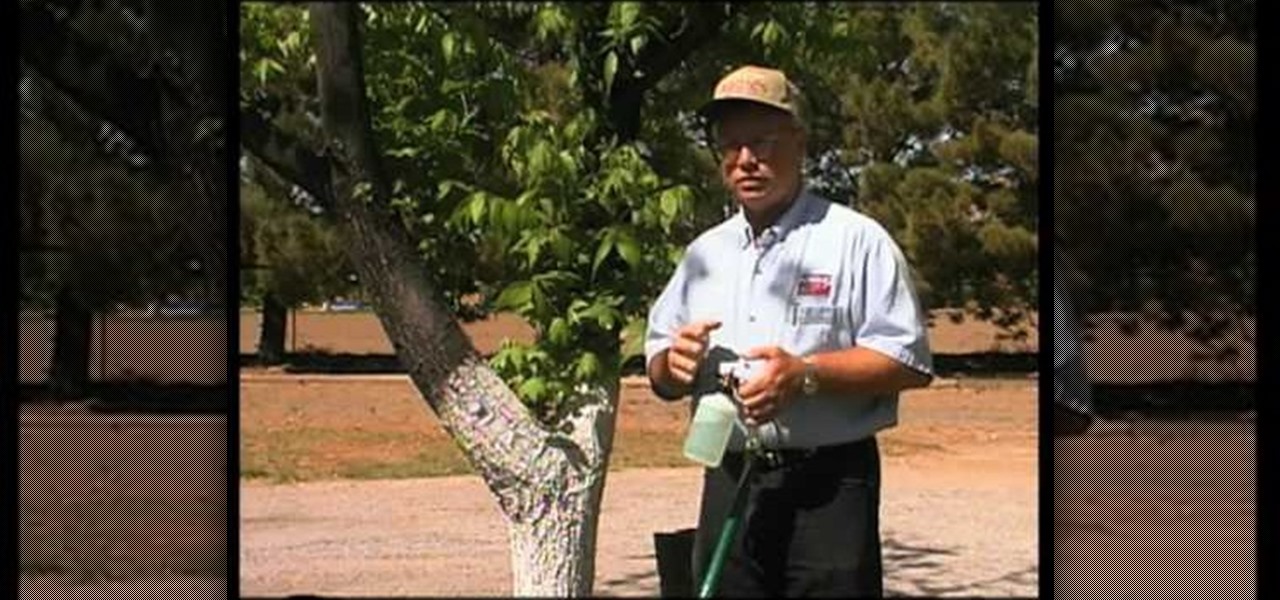
How To: Add zinc to pecan trees
John White is an expert horticulturist. He thinks you need to make sure to add zinc to the proper care of your pecan trees. White advises to buy zinc at your local gardening store and use a garden sprayer to put it on your trees. Older trees and younger trees need to have zinc at different times. When you are spraying make sure to hit all the limbs and leaves. Without proper care your trees will not be as healthy as they would if you follow White's simple instructions. Make sure to follow his...
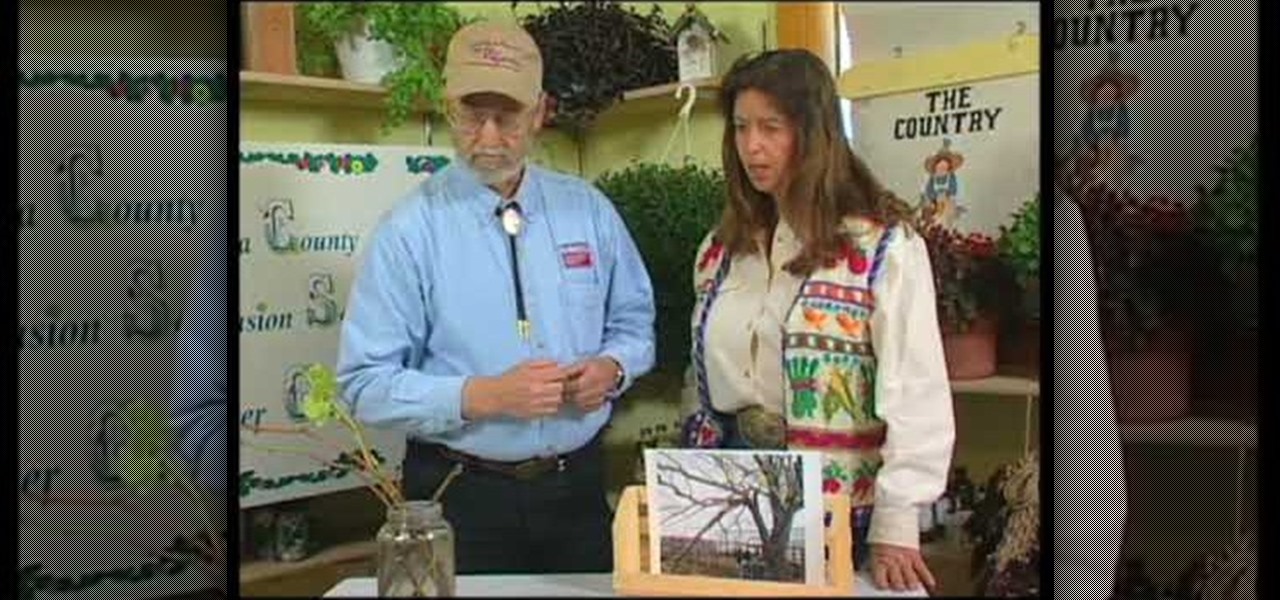
How To: Deal with broken tree branches & problems with grapes
This video illustrate us how to deal with broken tree branches and problems with grapes. Here are the following steps:Step 1: First of all clean the broken branch with water.Step 2; Now apply some tree primer or tree paint on the exposed area for quick healing and to prevent any infection.Step 3: To deal with problems in grapes first of all look for any infection on the leaf, stalk or the fruit.Step 4: If in case there is some infection ,identify the problem and sprinkle the pesticide for tha...
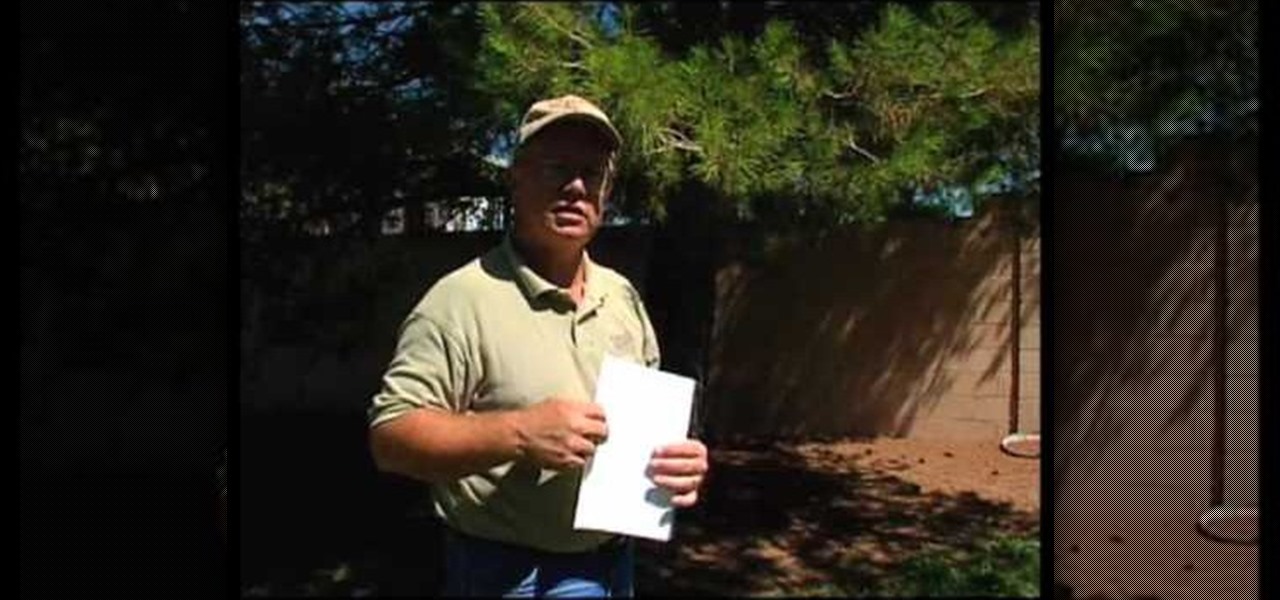
How To: Identify and control problems with pine trees
First of all whenever there is low rainfall and higher heat then there are problems.You shall notice that there are brown colored needles which dry up and then drop of. Sometimes they start at the tip and then move towards the branch. This shows drought and you need to soak in lots of water to overcome. However if you notice the brown needles going from the middle to the tip then these are due to natural process. Another problem is the presence of spider mite. Take a white sheet of paper and ...
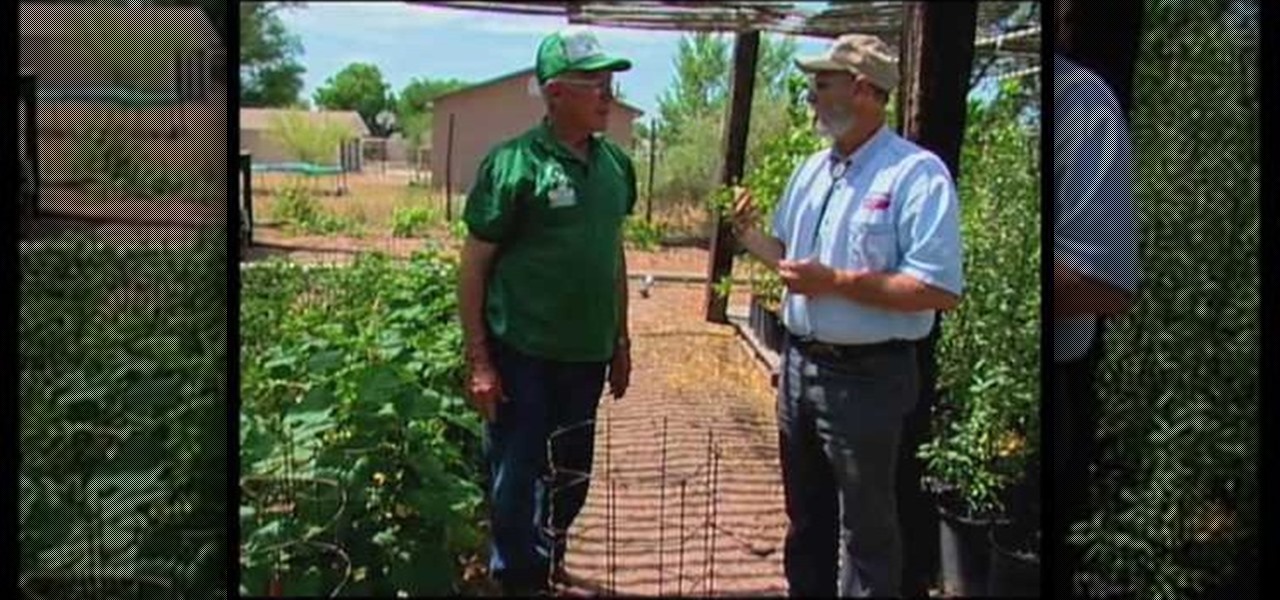
How To: Build a tomato cage
A piece of concrete reinforcement wire is cut and separated by a bow cutter at about 4 feet. The wires on one side of the separated section is bent in the form of a hook to hold the next side. As it would be hooked together to hold a tomato tree in position. It was suggested that rope cover material or material with small holes that can absorb sunlight be placed around the cage and held together with a clothes pin. Doing so would prevent bug plant, frost bite, curly top viruses , squash plant...
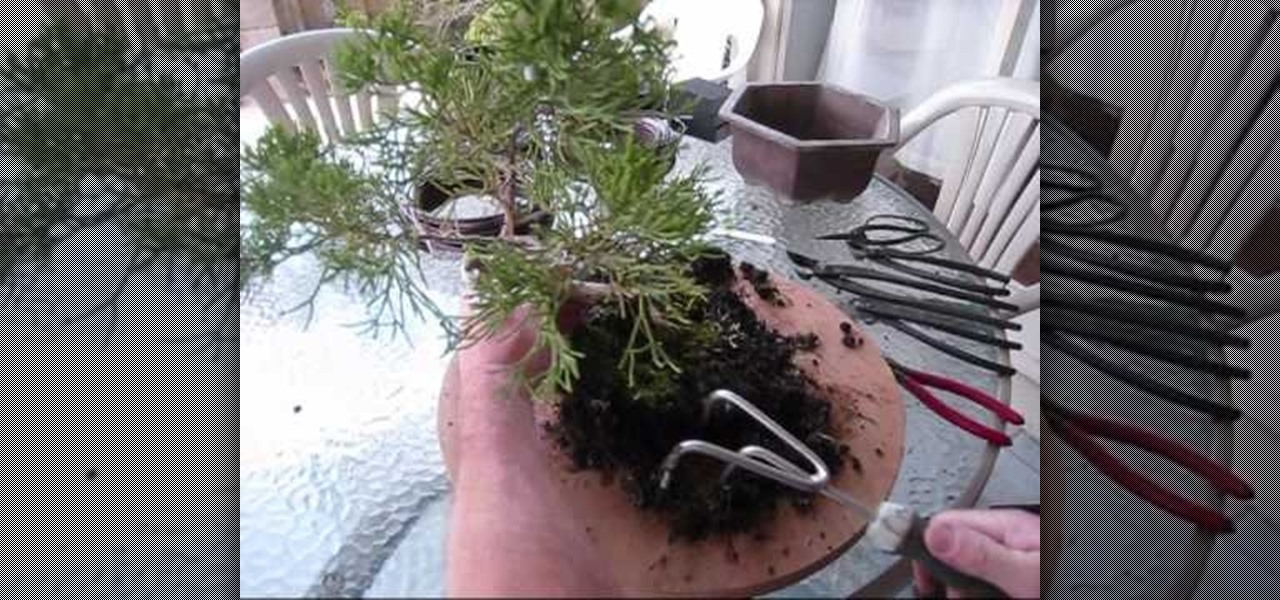
How To: Repot a juniper bonsai tree
In this video, Charles M. Teaches us how to re-pot a Bonsai tree. But before this, he explains how to make Bonsai soil. The ingredients to Bonsai soil are as follows: Potting soil, (from your local Home store) Hummus, Decomposed Granite, and a bucket. Take a couple of scoops from each ingredient and add to the bucket. Now you have your Bonsai soil and are ready to move along. Charles next explains how to handle the Bonsai itself. First, you want to remove any extra branches. Then you take it ...

How To: Indentify problems with the ash & golden rain tree
In this how-to video, you will learn how to identify and control problems with Ash and Golden Rain Trees. If there are discolorations in the tree branch, there may be a few problems. If you see a severe orange color, this will damage the tree. You can paint the tree with a white paint to avoid this problem. Pruning cuts that have been executed poorly will also cause discoloration and rot. If the leaves have tip burn, this may mean that the air is dry and arid. If twigs on Junipers look dirty ...
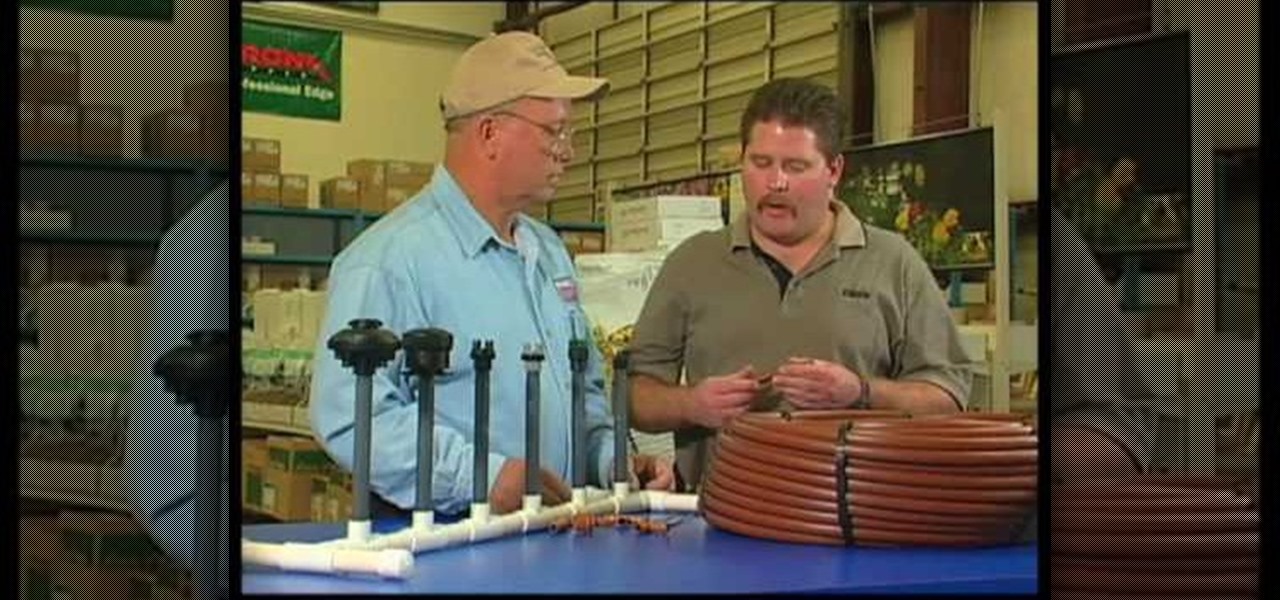
How To: Apply a drip irrigation system to your garden
Drip irrigation systems in your garden are centered around a long length of pressure compensating drip tubing. The tubing will also need a pressure regulator and a "Y filter" to keep it clear of impurities. When laying the tubing down in your garden, be sure to keep the kinks out of the line. When choosing an emitter for your irrigation system, keep in mind the needs of your particular garden, and choose either a single emitter or one of various multi-emitters. Depending on the size of your g...
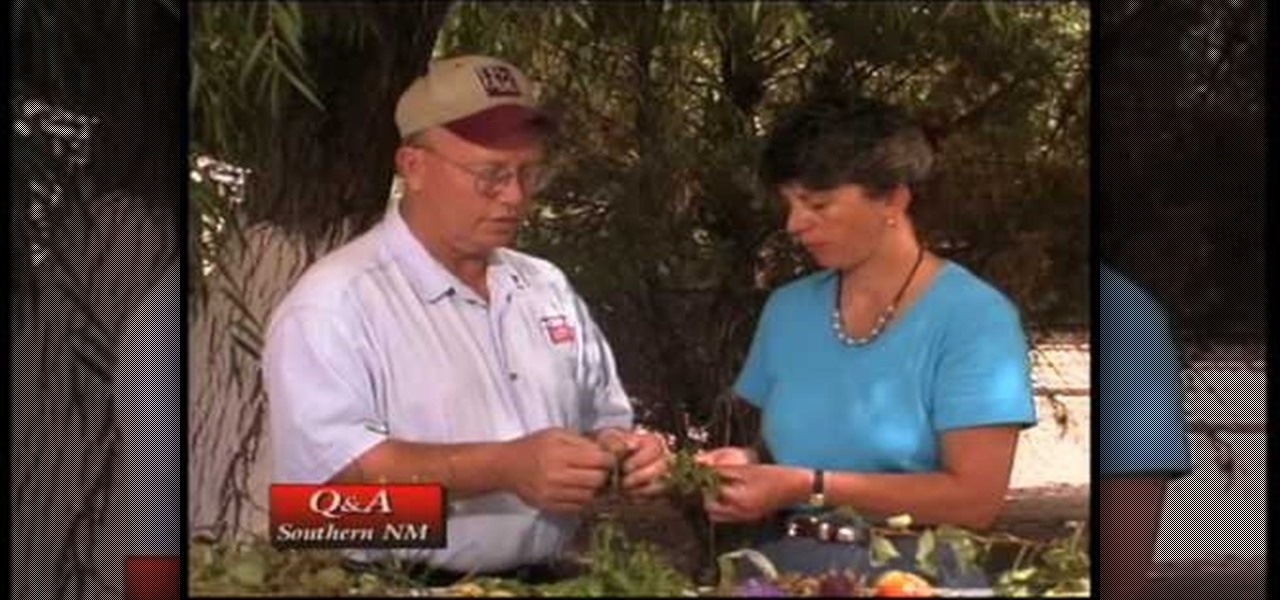
How To: Identify problems with the rubber plant, pomegranite
This video illustrate us how to identify problems with the rubber plant and the pomegranate. Here are the following steps:Step 1:First of all look whether both the plant leaves are in right shape that is they are not deformed, in case if it is then look for any bacterial or fungal infection.Step 2: Look whether there is any yellowing of the leaves. If so this may be due to over watering.Step 3: Look for whether there in any latex blocking in the rubber plant, if so then remove it or latex won...
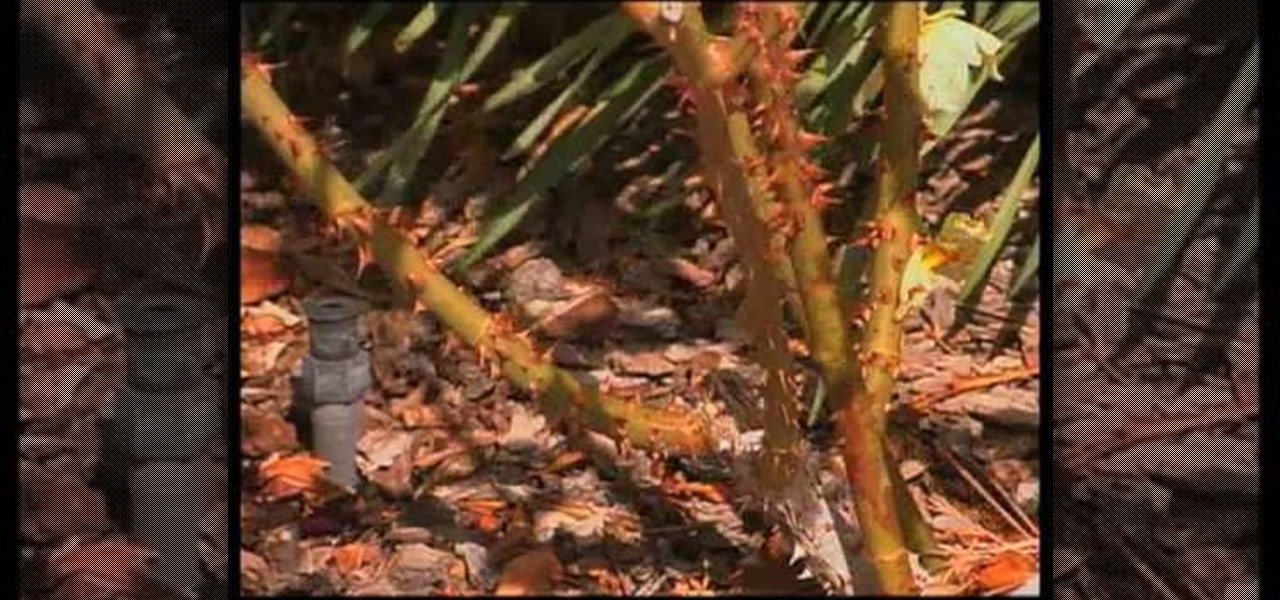
How To: Trim rose bushes
In this how-to video, you will learn how to trim rose bushes. You will need a pair of shears and roses. Cut anything growing from the summer. You should also cut any old wood as well. This will leave new growth for the rose bushes. The best way to remove this is to go in and cut it with almost an inch of cane left. Continue to cut the dead wood. Next, prune above the buds on the top. Do this all around the bush. Make sure they are all about the same height. Look for a good outside bud before ...
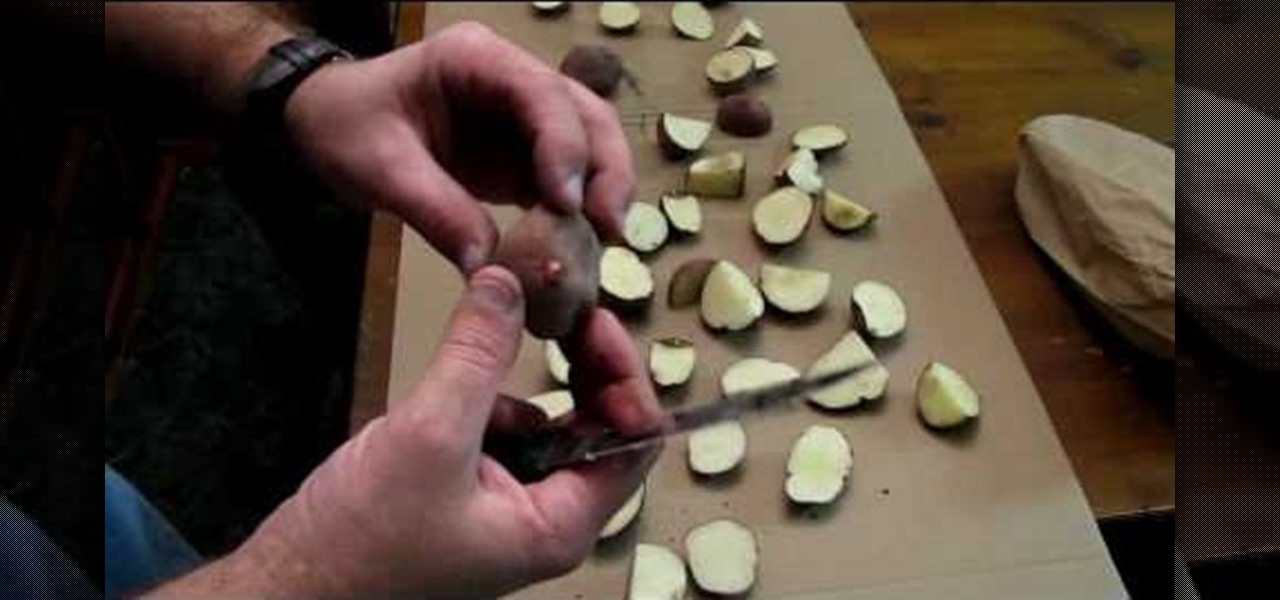
How To: Cut & plant potatoes
This video describes how to cut and plant potatoes in your own garden. Potatoes are easy to grow almost anywhere and can be started early in the year since they are resistant to cold.
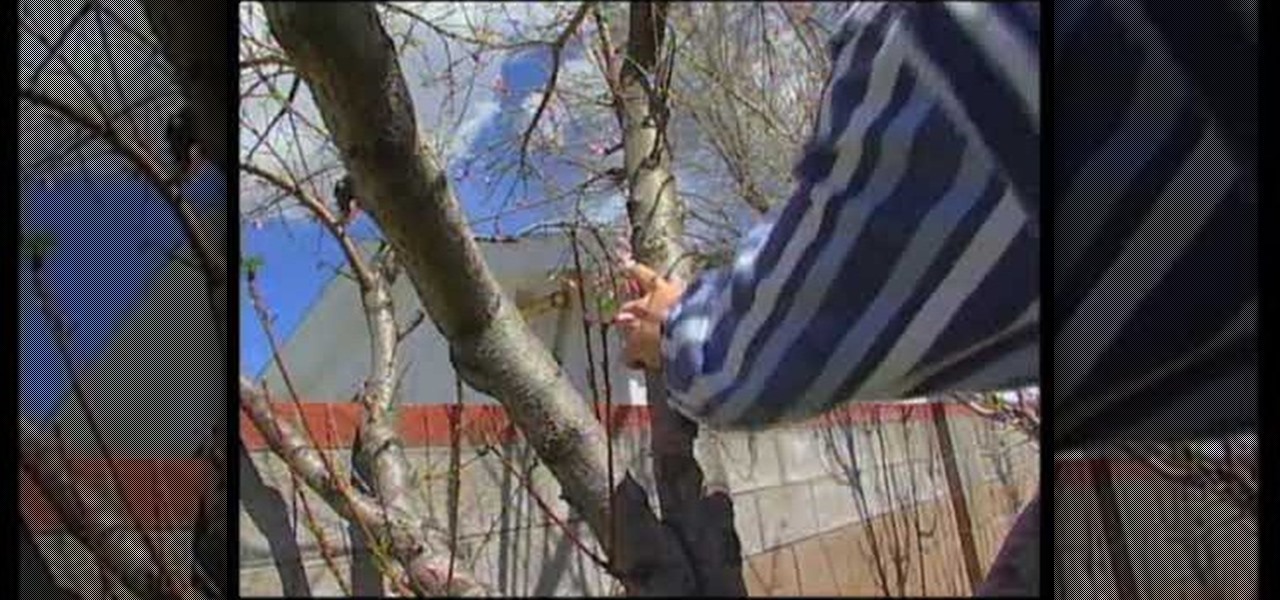
How To: Prune a peach tree & trim raspberry plants
Curtis Smith, Extension Horticulturist, and Rick Daniel, Bernalillo County Horticulture Agent, demonstrate how to prune a peach tree and trim raspberry plants. If a branch is in the way and causing problems or if it is unhealthy, cut it off at anytime. Cut outside of the bark collar when pruning branches. Make three cuts by first making an undercut on the bottom side so the bark doesn't strip off too far. Put on gloves when working with raspberry bushes. Cut the bushes down to the ground each...
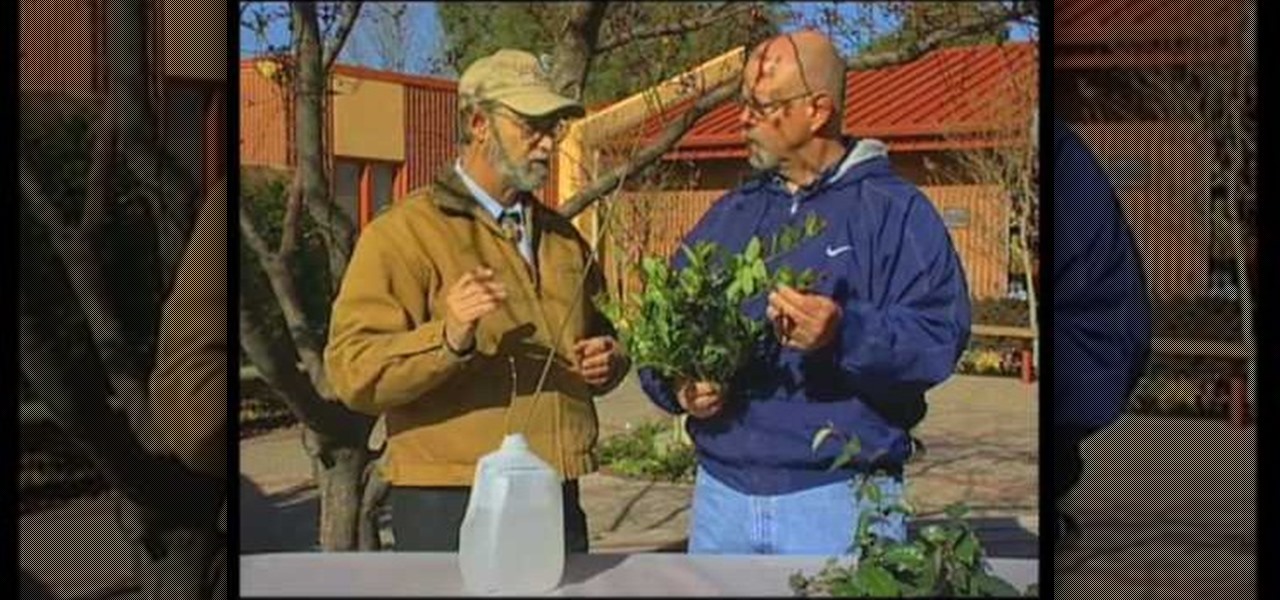
How To: Protect outdoor plants and shrubs in the winter
Curtis Smith of Yard and Garden teachers viewers how to protect outdoor plants and shrubs in the winter. For instance, Lilacs and be burned by the cold weather so it is advised to not place lilac to the South or the West against a wall in the winter. Next, with a privett plant there may be damage on the leaves but others are perfect - but this is normal. This plant is an evergreen and some cells in the leaf may die which will make the leaves look damaged. This will be shown on last years leav...
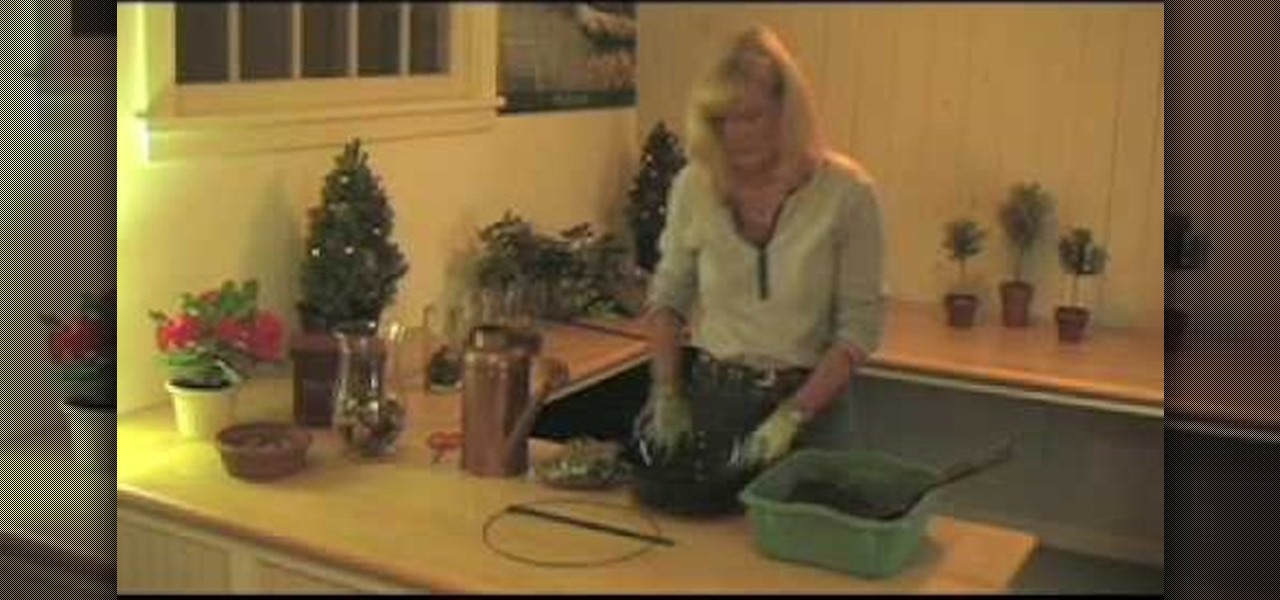
How To: Grow paperwhite narcissus bulbs in a vase
We are shown by a nursery manager how to grow Paper White Narcissus. While not hardy outdoors they are simple to grown indoors. We are shown how to grow in a vase or pot. For the vase, pebbles are placed on the bottom then about two inches of water. The bulbs are put tips up roots down, then a little more pebbles on top. The potted version is filled with a moist soil and water mixture. The bulbs are placed identical with soil lightly on top. With the pot a flowering support structure is place...
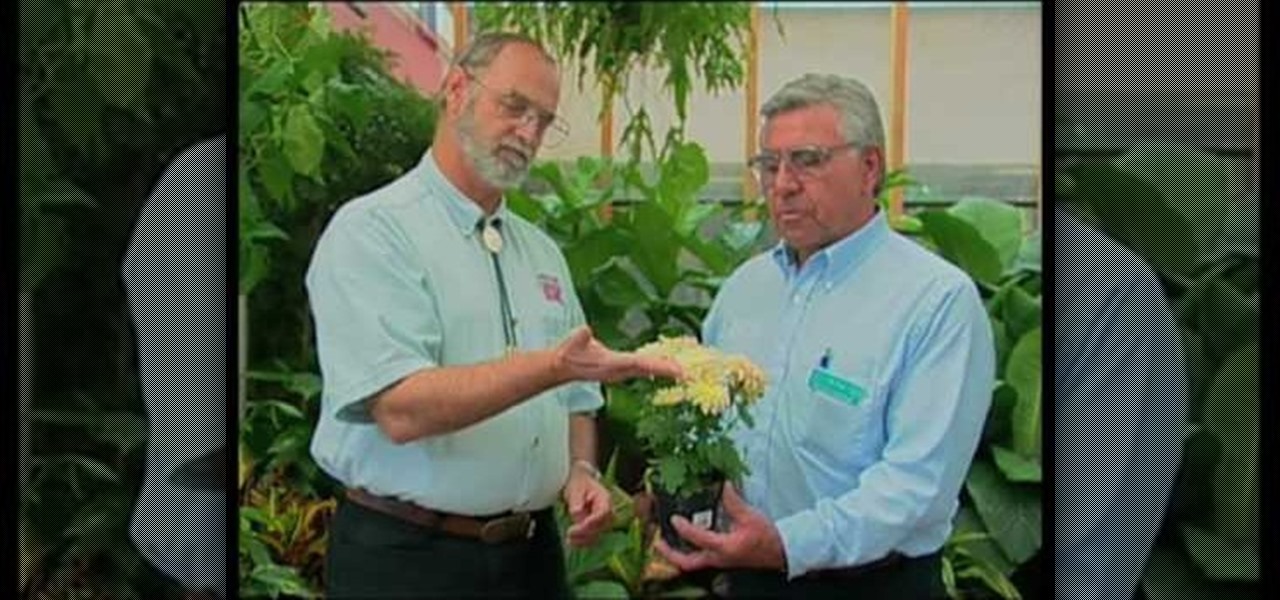
How To: Identify problems with snails & slugs
Snails and slugs can really be a problem sometimes if you are a gardener. They feed on plants and can be considered pests, sometimes even getting inside your house. They are identified by their tell-tale slime trails. A bad infestation can be very hard to deal with. However, specialized cleaners or fertilizers can help your garden snail-free.
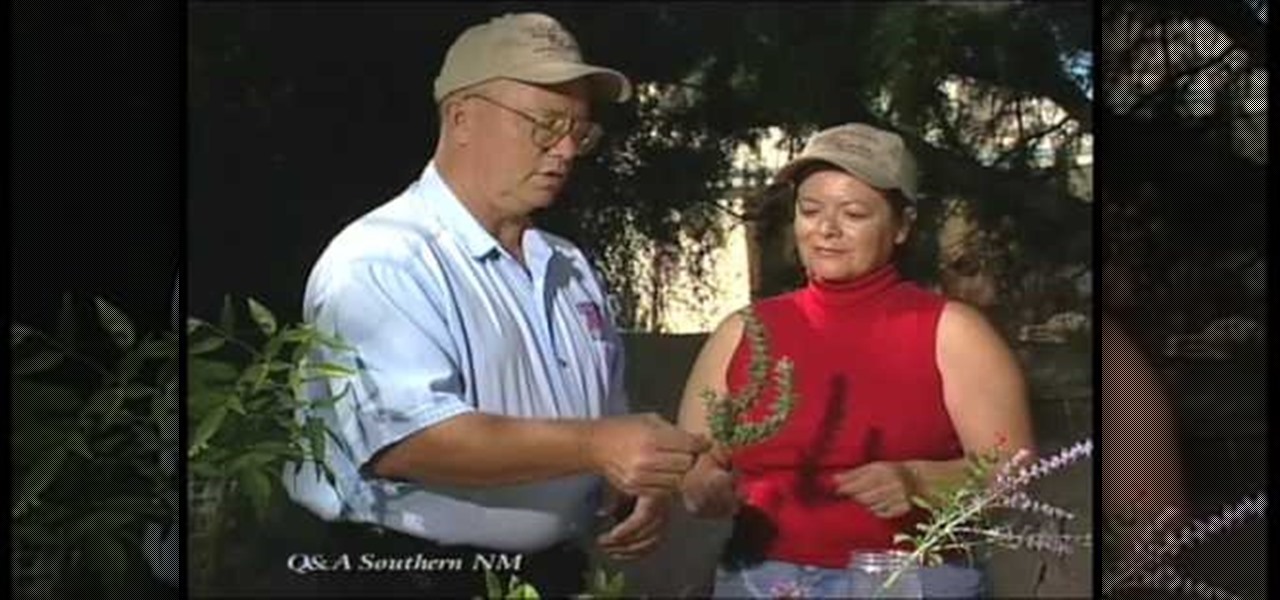
How To: Choose the right sage plant
In this how-to video, you will learn how to choose the right sage plant for your garden or landscape. The Texas Ranger is one type of plant to choose. They do well in hot, dry climates and heavy soils. They do not need a lot of maintenance. Selective pruning is useful for this particular plant. Green Cloud has dark green foliage and is a lot thicker. Scarlet Sage attract Hummingbirds. These have little insect problems if you do not give them too much water. Mexican Sage dries very well. It ca...

How To: Style a yamadori bonsai
This step-by-step tutorial will teach you the correct way make a Light-Saber effect using Paint.net.In this video, you will learn how to gather the Light-Saber image, paste the image into Paint.net, choose the preferred color for the Light-Saber, and other special effects such as: sizing your Light-Saber, 'blurring' your Light-Saber, and learning the correct way to save your project.Your first step is to right click on the Light-Saber image and click 'Copy'. Next, you open Paint.net. Then you...

How To: Identify problems when your wisteria is not blooming
On Southwest Yard & Garden, John White, a Dona Ana County Extension Agent, gets together with Master Gardener Virginia Podmenik to discuss some common problems with typical garden plants. Having trouble getting your Wisteria or Bouganvia to bloom? John White has several solutions. Baffled when your Dianthus and Artemsia grow into beautiful green mounds, then split and turn brown in the center? John White will help you find out why and what you can do to help. Not sure if it’s the right time t...
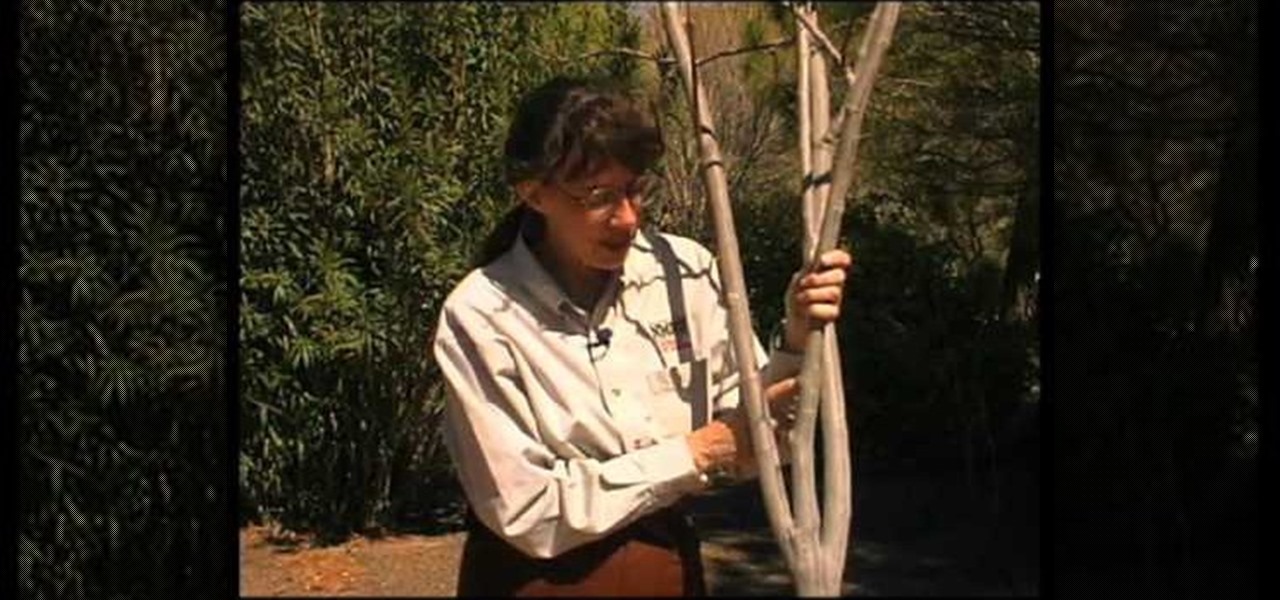
How To: Identify insects in your garden
How to identify insects in your gardenCarol Sutherland explains us in this video of how to identify insects in your garden. She is an extension entomologist and she explains her view on the insects here. To be known is that some insects are damaging, some others we want to be aware of and some are necessary in your garden. Here during the garden season you get to see insects on trees as they form a familiar habitat. Mostly on the split ends and the broken ends the insects gets invaded. She sh...

How To: Grow fresh garlic indoors
Love fresh garlic but don't have the outside space or right climate to grow it? Not to worry! This video is here to show you how to grow your very own fresh picked garlic indoors. Follow these easy steps and you'll have a delicious seasoning in a couple of weeks, and full grown heads of garlic in a couple of months!
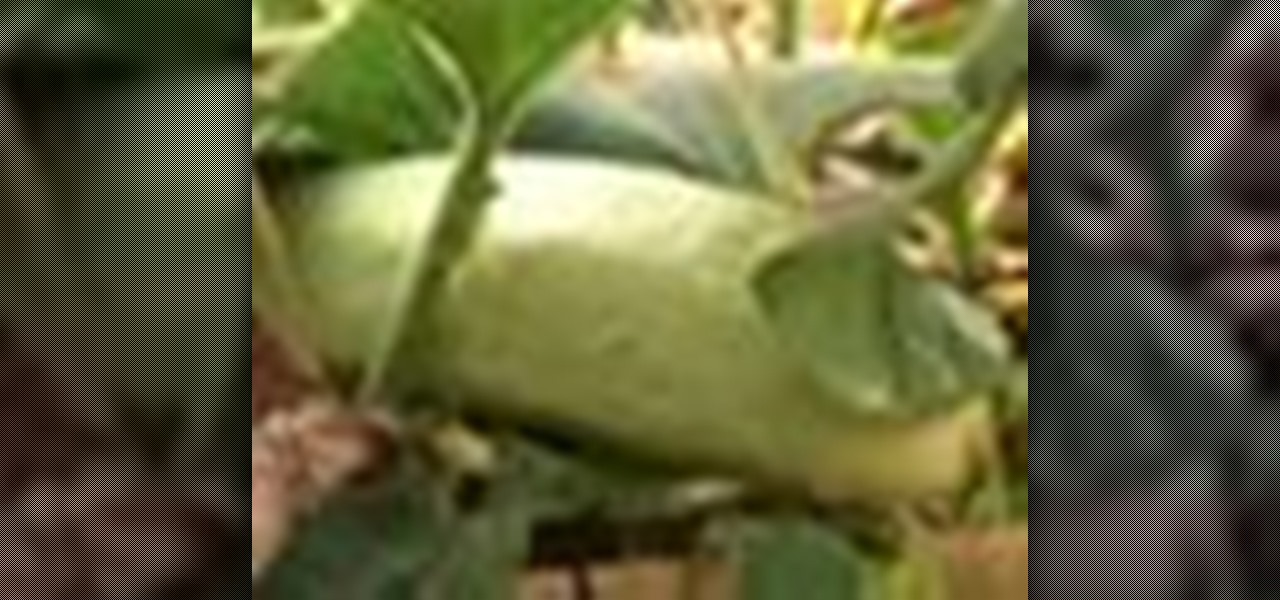
How To: Grow your own cucumbers
Cucumbers are a tasty addition to any salad or sandwich. Why not add this yummy vegetable to your garden at home? They are easy to grow and will taste even better fresh from the ground!
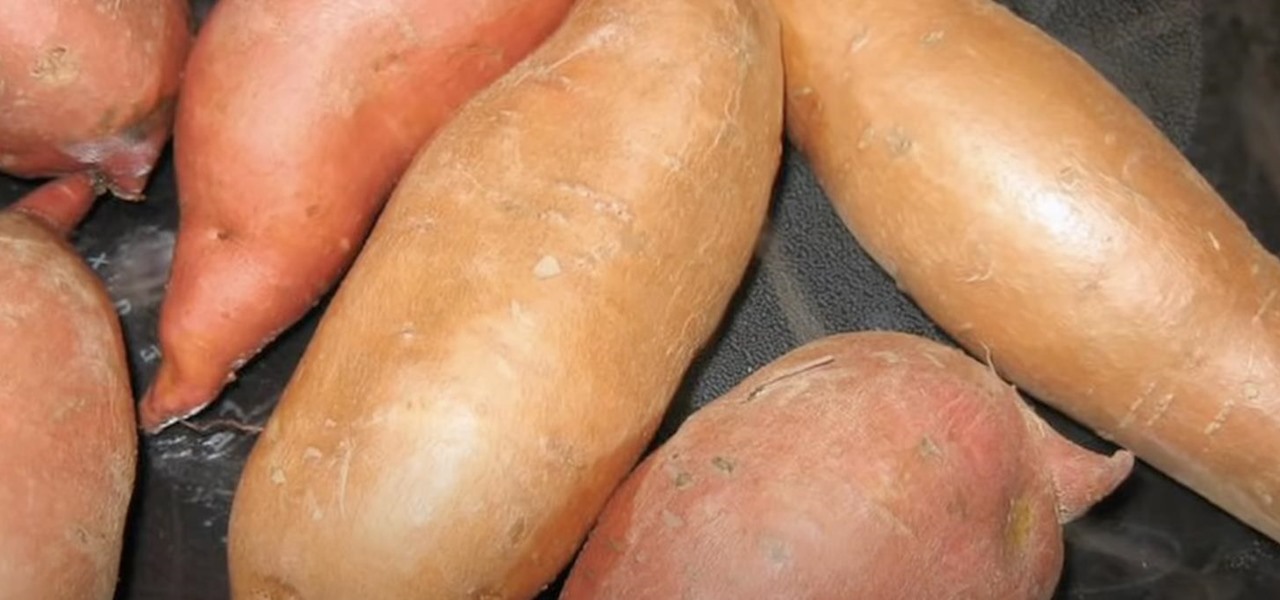
How To: Grow Your Own Sweet Potatoes Year Round
Sweet potatoes are a popular side dish, especially around the holidays. Save some money and start growing sweet potatoes at home. Not only will they be cheaper, but you'll be able to enjoy them year-round.

How To: Create potting soil for cacti and succulents
This video teaches you how to create the perfect potting soil for your cacti or succulents. A blend for you beautiful pants to grow strong and healthy.

How To: Edge a garden bed
Nothing sets off your garden beds like a nice, crisp edge. Here are four common tools for edging a garden bed. This video gives you a few options on how to edge your garden.
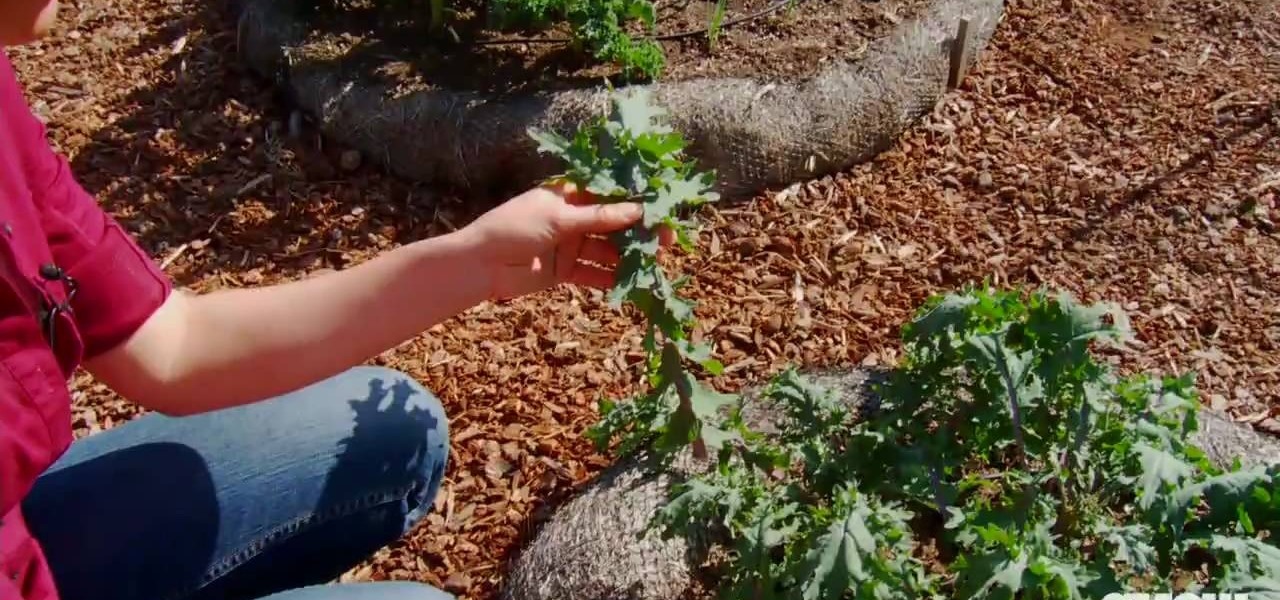
How To: Harvest leafy greens
You’ve put in the work to grow wonderful greens in your garden and your ready to make a tasty salad. When you are ready to use your greens you can cut just a few of the outer leaves off at a time so the plant can continue thriving.

How To: Get rid of garden snails using nontoxic solutions
Snails can have a devastating effect on your garden but there are ways without using toxic chemicals to get your snail problem under control. You can use pick snails off by hand and throw them away, you can put out iron phosphate based bait, or you can put a bowl of beer out which they will be drawn to and away from your garden.



